2019 Porsche Cayenne
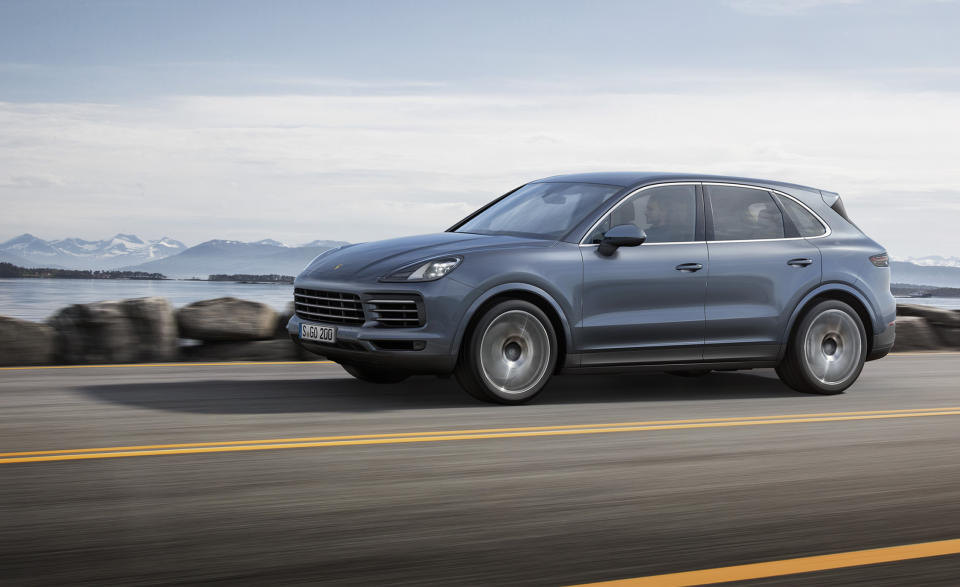
It took Porsche 53 years to sell a million 911s. Porsche has sold 770,000 Cayennes in the 15 years since it was launched in 2002, and the millionth will probably be built in about three years. As much as we love and cherish the sports cars from Stuttgart, Porsche in the 21st century is the house that the Cayenne SUV built.
It’s clear that Porsche didn’t want to mess with success, so the new third-generation Cayenne looks a lot like previous Cayennes. Softly rounded front fenders, gaping air intakes, a bulging hood, and the shape of the greenhouse are all clear Cayenne traits that have carried through. It’s slightly lower and wider, but Porsche didn’t radically alter the formula. It could have, as the 2019 model is entirely new. No sheetmetal carries over, and the Cayenne is now on a new platform. At this point, though, changing the model into something completely different would make about as much sense as replacing the 911 with a front-engine sports car. (You laugh, but that almost happened—see 928.)
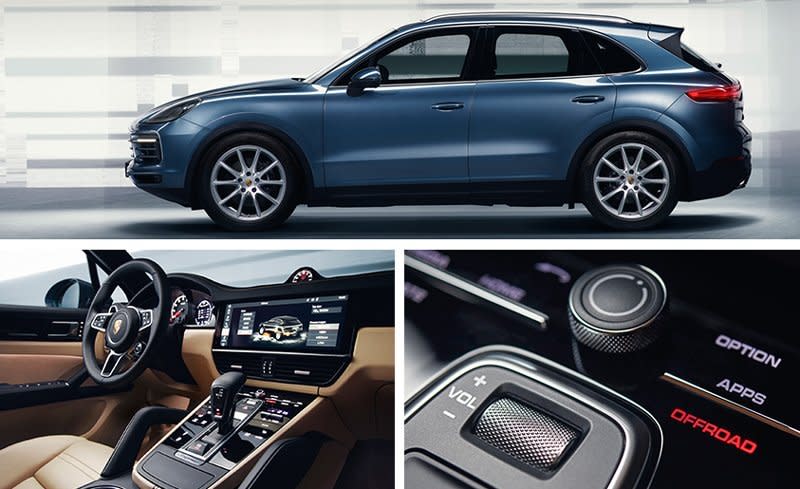
Built on the MLB platform that also forms the basis for the Panamera sedan and most Audis including the Q7 SUV, the Cayenne retains its 113.9-inch wheelbase, but the new architecture brings more aluminum to the structure, which reduces mass slightly. A longitudinally mounted engine is located just ahead of the front axle, which contributes to the V-8–powered Cayenne carrying 57 percent of its weight up front, a very Audi-like number. The lighter V-6 models are slightly less nose heavy. The familiar and excellent ZF-sourced eight-speed automatic bolts directly to the engine and now incorporates the front differential. Order the Sport Chrono package ($1130) and the transmission adds a launch-control function that reduces zero-to-60-mph times by about 0.3 second for each engine, according to Porsche.
Power Trio
The 2019 Cayenne will be available in three strengths, with each rung of the Cayenne ladder adding roughly 100 horsepower and lopping about a second off the sprint to 60 mph. When the Cayenne arrives at dealers in July, it will start at $66,750. The base version comes with a turbocharged 3.0-liter V-6 pushing 340 horsepower and 332 lb-ft of torque, an engine shared with the base Panamera and Audi’s S4 and S5. Responsive and quiet, the single-turbo 3.0-liter has 40 more horsepower than the outgoing Cayenne and moves the approximately 4500-pound SUV with satisfying ease. It pulls smoothly, never calls much attention to itself, and feels appropriately powerful; the factory-claimed zero-to-60-mph time is 5.6 seconds with launch control or 5.9 without. The base engine’s biggest problem is that two stronger options exist.
For an additional $17,200 over the entry-level version, Porsche will bolt its 440-hp twin-turbo 2.9-liter V-6 into the Cayenne S, which drops zero-to-60-mph times to 4.9 seconds (4.6 with launch control). Compared with the base engine, the extra power and the 405 lb-ft of torque are immediately noticeable. Passing power is superb, and the S has an eagerness that’s missing from the base engine. The twin-turbo V-6 also has a louder and grittier growl from 3000 rpm to redline than does the base 3.0-liter. Aside from the sound of the V-6 working, there’s little else that disturbs the cabin, as road and wind noise are kept to luxury-car levels.
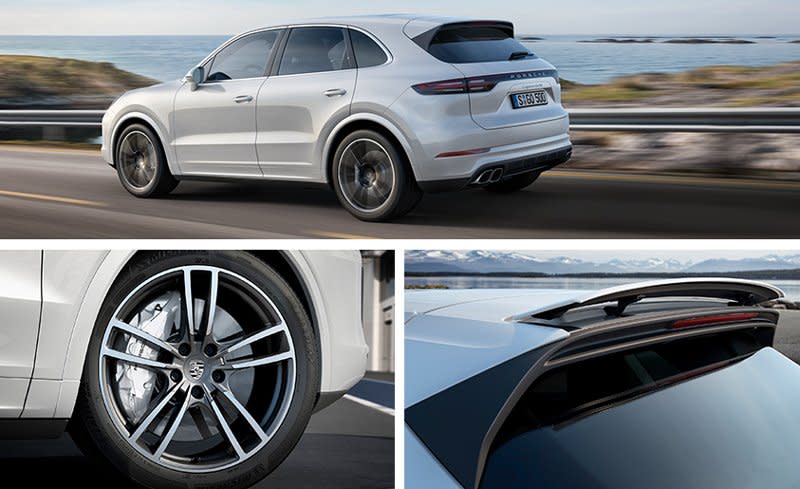
At the top of the Cayenne caste is the Turbo model, arriving in the fall of 2018 and priced at $125,650. It now boasts 550 horsepower (30 more than before) and 567 lb-ft from a twin-turbocharged 4.0-liter V-8. According to Porsche, the new Turbo outperforms the previous Turbo S model, whose twin-turbo 4.8-liter V-8 put out 570 horsepower. A claimed zero-to-60-mph time of 3.7 seconds is astonishing enough before you consider that Porsche’s acceleration claims are almost always conservative. (The last Turbo S we tested hit 60 in 3.8 seconds.) It’s no surprise that of the three engines, the V-8 sounds the best. Graced with a smooth and deep voice and a booming exhaust, the V-8 seems to pride itself in announcing its V-8–ness, but isn’t as loud as the thundering Mercedes-AMG V-8 of the same displacement.
Traveling Where Minotaur Trod Before
Porsche provided all three powertrains at the launch program on the Greek island of Crete, mythical home to the ancient world’s crossover: the half-bull, half-man Minotaur. The three models came stacked with chassis options. All of the cars had four-wheel steering ($1620), active anti-roll bars ($3590), three-chamber air springs ($4160 on the base Cayenne, $2170 on the S, standard on the Turbo), Pirelli P Zero performance tires, and an electronically controlled limited-slip differential and brake-based torque vectoring ($1500, available only on the S and the Turbo). With nearly identical chassis setups, the three Cayennes felt remarkable similar when pressed through the canyons.
What we noticed first was the exceptional steering. The Cayenne has electrically assisted power steering, but unlike many other automakers, Porsche has figured out how to do it right. Direct and with the right amount of weighting as the front tires press into a corner, the steering is quick, positive, and helps make the Cayenne feel smaller than its two-plus-ton mass and 193-plus-inch length suggest.
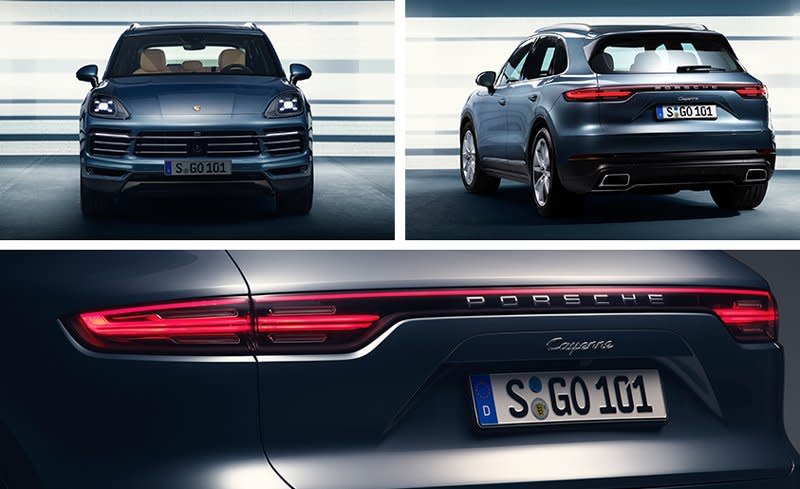
Press any Cayenne into a tight corner and the front tires briefly protest. For the first time, the Cayenne gets a staggered-tire setup: Base and S models have 255/55ZR-19 fronts and 275/50ZR-19 rears; the Turbo has an inch-wider wheel with 285/40ZR-21s in the front and 315/35ZR-21s in back. Press on through low-speed corners and the four-wheel steering turns the rear wheels in the opposite direction of the fronts, neatly pivoting the rear end through the corner. Stomp on the accelerator, and the Cayenne would happily drift were it not for the intervention of the stability control. As in Porsche’s sports cars, pushing the PSM (stability control) button once puts the Cayenne in a less intrusive Sport mode; holding down the button shuts off the system entirely. Coupled with PDCC (the electrically controlled active anti-roll bars) and the three-chamber air springs, there’s effectively no body roll. It may sound like a lot of electronic aids to get an SUV to handle—and there definitely are a lot—but the systems work in concert, giving the Cayenne’s handling a natural fluidity and ease that doesn’t seem artificially enhanced.
With this selection of options, the Cayenne feels more like a good sports sedan than an SUV. We’d really like to try one on the steel coil springs and without the rear-wheel steering and active anti-roll bars to see how much these chassis aids affect handling, but none were available at the launch event.
Porsche is introducing tungsten-coated iron brake rotors on the new Cayenne. Dubbed PSCB (Porsche Surface Coated Brake), the brakes promise a grabbier surface, less brake dust, and a 30-percent longer life than the conventional brakes. Optional on base and S models and standard on the Turbo, they’ll cost $3490 and come with white calipers—10-piston monoblocks in the front and four-pot grabbers in the rear—borrowed from the $9080 carbon-ceramic option (PCCB). We didn’t notice any difference in the way the pedal felt compared with the standard rotors. As in all Porsches, the pedal is firm but easily modulated, and the brakes easily stopped the Cayenne from high speeds.
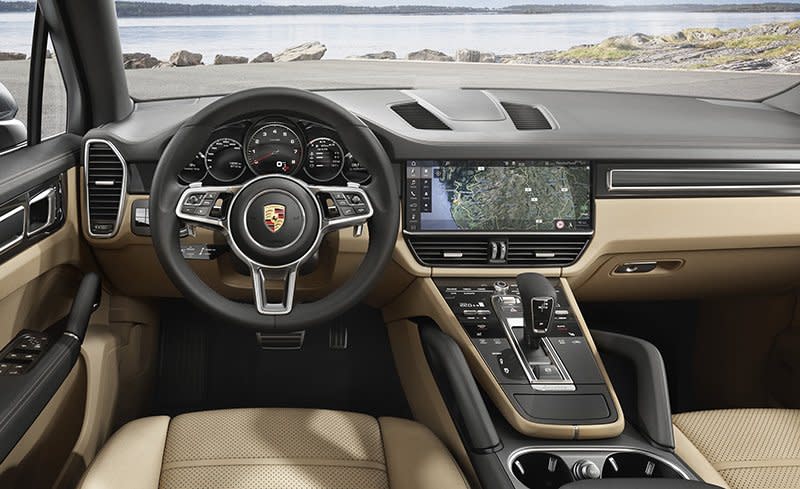
Also as in all Porsches, the ignition remains on the left side of the steering wheel, a quiet salute to all the parents who got their kids to practice on time. Much of the interior is pulled from the Panamera, including the 12.3-inch touchscreen and the capacitive-touch switches surrounding the shifter. The herringbone arrangement of buttons surrounding the shifter on the center console is gone.
The capacitive-touch panel isn’t our favorite and it quickly attracts fingerprint smudges; we prefer the predictable nature of real buttons, but the panel does move slightly when pressed and gives a slight vibration to let you know you’ve done something. The large touchscreen works without much hassle once you learn the menu structure. Responses are quick, but it’s easy to miss the icon you’re trying to hit when the Cayenne is moving. Porsche wisely ditched the Panamera’s needlessly complex central HVAC vents that are controlled by the touchscreen. In the Cayenne you can manipulate the vents themselves to open, close, and move them, as in nearly every car ever built.
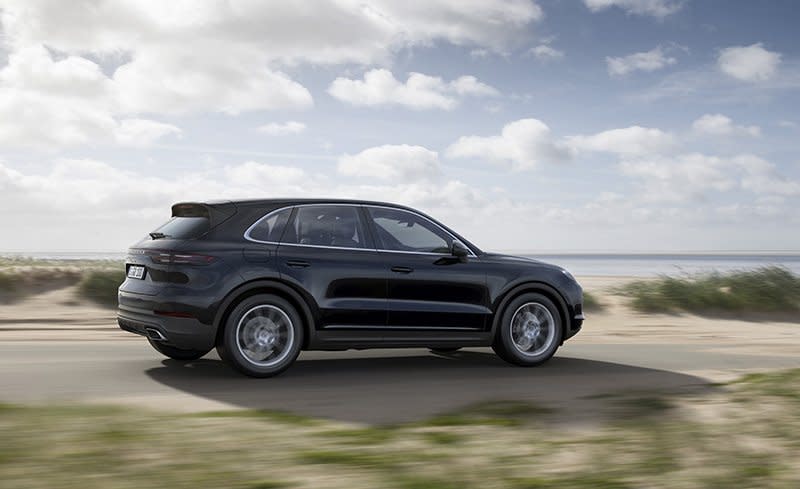
Tall and wide rear doors ensure that it’s easy to climb into the back seat. Once inside, the outboard seats of the split-folding bench are more like bucket seats with sports-car-like lateral support. The middle seat is best left for temporary use. Cargo capacity has increased slightly in the new Cayenne, and there’s a cutout for a compact temporary spare. European versions lacked the spare, but U.S. models are likely to get it.
Porsche hasn’t radically departed from the original Cayenne. There’s still ample power, amazing handling for an SUV, and a luxury-car interior. Building a sporty and pricey utility vehicle is no longer a risk, and as a result the Cayenne now has a lot of imitators. Even with tough competition from Mercedes-AMG, BMW, and Range Rover, the redesigned Cayenne should have no problem reaching the one-million mark.
Specifications >
VEHICLE TYPE: front-engine, all-wheel-drive, 5-passenger, 4-door hatchback
BASE PRICES: Cayenne, $66,750;
Cayenne S, $83,950;
Cayenne Turbo, $125,650
ENGINE TYPES: turbocharged and intercooled DOHC 24-valve 3.0-liter V-6, 340 hp, 332 lb-ft; twin-turbocharged and intercooled DOHC 24-valve 2.9-liter V-6, 440 hp, 405 lb-ft; twin-turbocharged and intercooled DOHC 32-valve 4.0-liter V-8, 550 hp, 567 lb-ft
TRANSMISSION: 8-speed automatic with manual shifting mode
DIMENSIONS:
Wheelbase: 113.9 in
Length: 193.6–193.9 in
Width: 78.0 in Height: 65.8–66.7 in
Cargo volume: 26–27 cu ft
Curb weight (C/D est): 4500–4900 lb
PERFORMANCE (C/D EST):
Zero to 60 mph: 3.7–5.7 sec
Zero to 100 mph: 9.1–13.8 sec
Standing ¼-mile: 12.2–14.1 sec
Top speed: 152–178 mph
EPA FUEL ECONOMY (C/D EST):
Combined/city/highway: 20–22/17–20/24–26 mpg

 Yahoo Autos
Yahoo Autos 